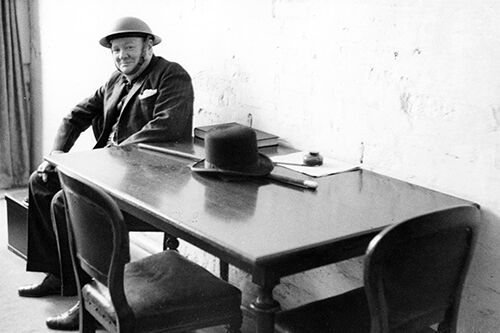
RAF Uxbridge – defending the South East
Published:
Categories:
The Munich Crisis of 1938 marked a turning point for the RAF, as Hitler's intent became clear and hopes of peace faded. The RAF's timely action in building the air defence bunker at RAF Uxbridge gave them a significant advantage in defending the South East when war came to Britain's shores on 10 July 1940.
With war on the horizon and knowing that attacks would likely focus on London and the South East, given the technical capabilities of aircraft at the time, the RAF set about building a state of the art, top secret bunker from which to direct air defence from mainland Europe.
RAF Uxbridge, just outside of central London, was selected as the location and construction on the bunker began in February 1939 and finished in August of that year.
Designated as operational just 10 days before war was declared on 3 September 1939, the bunker was built to withstand the most powerful bombs of the day, equipped with the most modern communications technology, and provided airtight protection from chemical weapons.
Serving as the base of operations for Fighter Command No. 11 Group, it directed squadrons at RAF stations across the Southeast.
The Battle of Britain began on 10 July, as the Luftwaffe attacked British supply convoys in the English Channel. Fighters from No. 11 Group were on stand-by and scrambled on that very first day.
Britain benefitted immensely from its cutting edge use of radar in the early days of the Battle of Britain.
Incoming waves of German aircraft were detected by radar before they reached the coastline and this intelligence was transmitted to the command centre at Bentley Priory. The Observer Corps (later designated the Royal Observer Corps) corroborated the data and relayed the number, type, and altitude of incoming aircraft to Bentley Priory.
Bentley Priory transmitted this information to the Uxbridge Operations Room and the location of enemy aircraft were plotted on the plotting table.
The Controller at Uxbridge then had a visual representation of enemy aircraft and could scramble British fighters.
It took enemy aircraft approximately 20 minutes to fly from France to London and sometimes up to four minutes for the report of the incoming attack to be received by Bentley Priory and relayed to Uxbridge. A squadron of Spitfires took 14 minutes to scramble and reach 20,000 feet and Hurricanes took an additional two minutes to reach the same altitude.
This meant that the Controller at Uxbridge literally had seconds to process the intelligence reports, select a squadron from those at the ready, and give the order to scramble.
The fighters under the command of No. 11 Group shot down roughly 1,300 enemy aircraft – about 75 per cent of all the aircraft downed in the Battle of Britain. Their success in downing enemy fighters and bombers helped prevent further destruction and loss of civilian life in London and the Southeast and was instrumental in helping Britain win the air war.